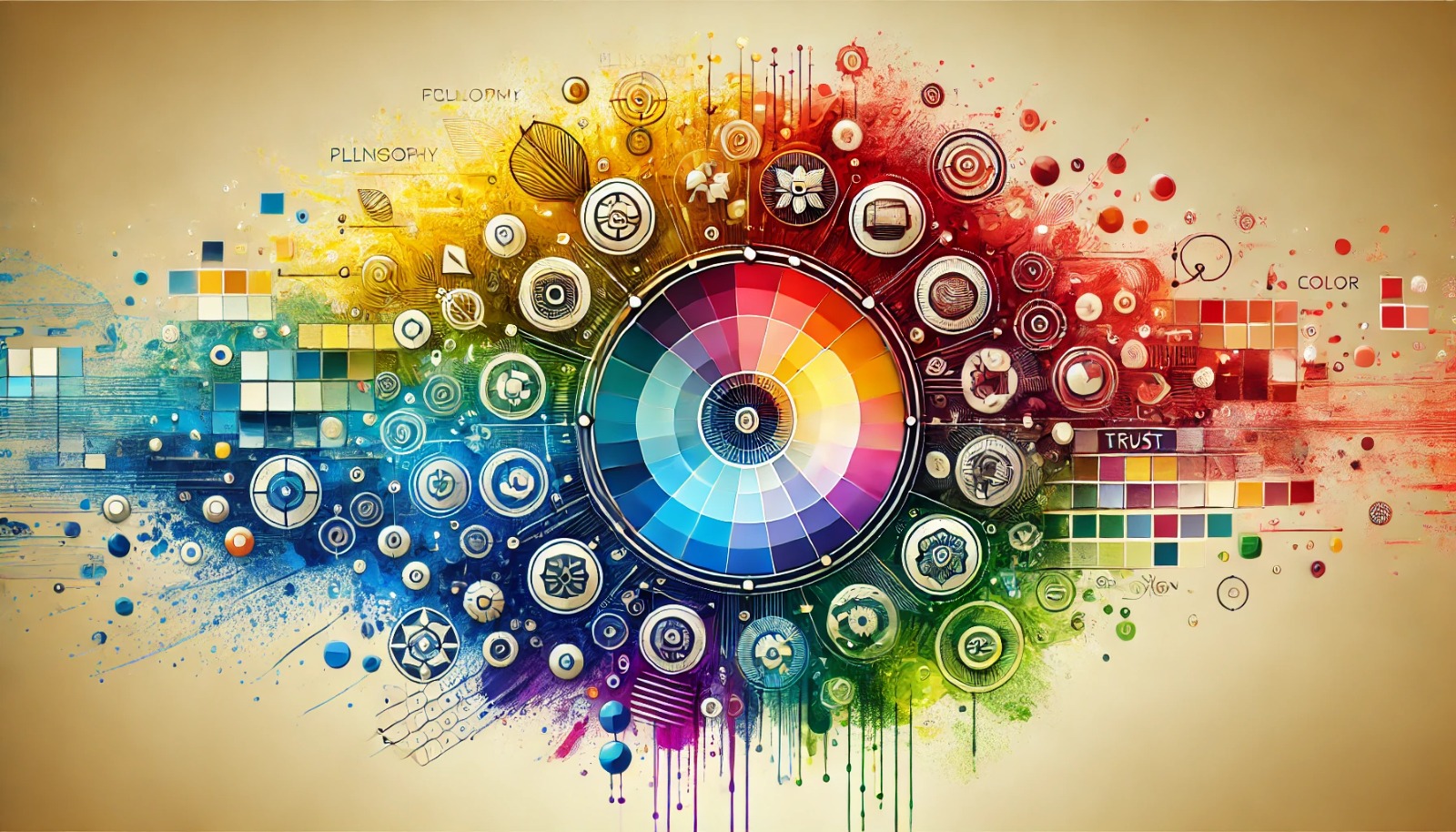admin2025-04-03T14:39:58+02:00
Colors are an essential element in logo design, playing a pivotal role in conveying a brand’s emotional and cultural messages. Color philosophy refers to the study of the impact of colors on the human psyche and how they can be used to enhance visual communication. In logo design, colors are not chosen randomly, but rather carefully selected to reflect the brand’s values and appeal to the target audience.
Colors and Psychology
Colors subconsciously influence our emotions and behaviors. For example:
– Red: Symbolizes energy, passion, and motivation. It is often used in logos for brands that seek to evoke excitement or quick appeal (such as Coca-Cola and Netflix).
– Blue: Expresses trust, calm, and professionalism. It is widely used in logos for technology companies and financial institutions (such as Facebook and IBM).
– Green: Associated with nature, growth, and health. Preferred for brands that work in the environmental or health sectors (such as Starbucks and Whole Foods).
– Yellow: Symbolizes optimism, creativity, and attention. It is used to attract attention and create positive energy (such as McDonald’s and IKEA).
– Black: Expresses luxury, elegance, and simplicity. It is used in luxury brands (such as Chanel and Nike).
Culture and Color Connotations
The connotations of colors vary across cultures. For example:
–white In Western culture, symbolizes purity and peace, while in some Asian cultures, it is associated with mourning.
– Red in China symbolizes good luck and prosperity, while in some other cultures, it may be associated with danger.
Therefore, logo designers must consider the cultural context of the target audience when choosing colors.
Balance and Harmony in Logo Design
Choosing just one color is not enough; one must consider how the colors interact with each other. The color wheel is used to balance primary and secondary colors. There are several styles of color combinations:
– Contrasting colors: used to attract attention (such as blue and yellow).
– Complementary colors: used to create harmony and visual balance (such as green and blue).
– Monochrome colors: used to create a simple and elegant feel (such as various shades of gray).
Colors and Visual Identity
A logo is not just a symbol; it is part of a brand’s visual identity. Colors help enhance brand recognition and differentiate it from competitors. For example, golden yellow is known as “McDonald’s yellow,” while light blue is known as “Tiffany blue.” These colors have become part of the cultural identity of brands.
Contemporary Logo Design Trends
With the evolution of graphic design, new trends in the use of color in logos have emerged:
– *Flat Design*: relies on simple, clear colors without complex effects.
– *Color gradients*: Used to add depth and visual appeal.
– *Neutral colors*: Used to create modern and elegant logos.
Tips for Choosing Colors in Logo Design
– *Know Your Audience*: Choose colors that match the preferences of your target audience.
– *Keep It Simple*: Don’t use more than 2-3 colors in your logo to avoid visual clutter.
– *Test Your Logo*: Ensure the logo looks good on different backgrounds and sizes.
– *Consider Contrast*: Ensure colors appear clearly on different backgrounds.
Conclusion
Color philosophy in logo design is both a science and an art. Colors are not just aesthetic elements; they are powerful tools for conveying messages and strengthening visual identity. By understanding the connotations of colors and their psychological and cultural effects, designers can create memorable logos that reflect brand values and effectively engage audiences.


